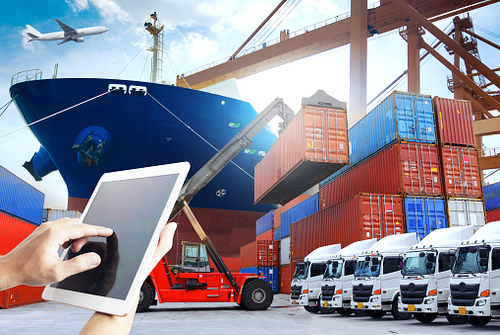Navigating Supply and Demand Shocks in the Supply Chain

Supply and demand. It’s no secret - companies that have the supplies to meet consumer demand are the ones that flourish, especially during uncertain times. Today, as the growing global pandemic continues to wreak havoc on supply chains across different industries, including manufacturers, wholesalers, and logistics providers, companies have no doubt entered very uncertain times.
Organizations across the globe are scrambling to create contingency plans to best maintain supply chain continuity, but they are faced with another dilemma – supply and demand shocks. The cause and effect of each are fundamental for surviving this crisis, and those that don’t (or can’t) are in serious trouble.
Before I outline the best practices to handle these new waves of supply and demand shocks, let’s take a step back and examine what those shocks actually mean to you and your business.
What is a Supply Shock?
A supply shock is any unexpected event that causes a dramatic change in future output. Supply shocks create a material shift in supply and force prices to shift and correspond with market demand and value. COVID-19 has led to supply shortages of many basic essentials, from paper products to hand sanitizer. As factories are shut down in China and elsewhere, it’s creating a ripple effect throughout supply chains everywhere.
What is a Demand Shock?
A demand shock, on the other hand, is also an unexpected event but one that increases or decreases buyers’ desire for specific goods and services. Consumer demand is currently undergoing a gigantic shock, as people prioritize their spending first toward essential items such as the aforementioned home and safety supplies, a spike exacerbated yet further with more and more employees working from home. The demand shock can go the other way too; for example, right now most people aren’t making as many discretionary purchases, such as automobiles, furniture, and apparel.
How Can My Company Curb Supply and Demand Shocks?
The immediate impact of COVID-19 has sent a dramatic jolt to supply chains everywhere. Companies need modernized software to manage through current and future supply and demand shocks. In order to become proactive and act with agility and flexibility, now is the time for companies to take greater control over their digital ecosystem.
If anything, the global pandemic has heightened the importance of flexibility and agility within a supply chain. A prolonged economic shutdown could spawn further supply shocks across different industries as consumer demand ebbs and flows based on their actions in response to this crisis.
I’ve said it before, and I’m going to say it again – end-to-end visibility via a single integration platform that can connect all of your ecosystem partners (both internally and externally) is your very best defense against supply chain disruption. As your company shapes its strategies for coming out of COVID-19 in the strongest posture, it is more important than ever to use this lull to evaluate how you can achieve true real-time visibility into your end-to-end business processes, such as order-to-cash, procure-to-pay and load tender-to-invoice as well as revenue streams and data flows.
For more ideas, visit our FAQ page on Cleo’s website, where you will find more suggestions on how you can take action now to emerge stronger later.

About Cleo

Watch a Demo

Comprehensive Guide to Gaining B2B Control

Duraflame Case Study
